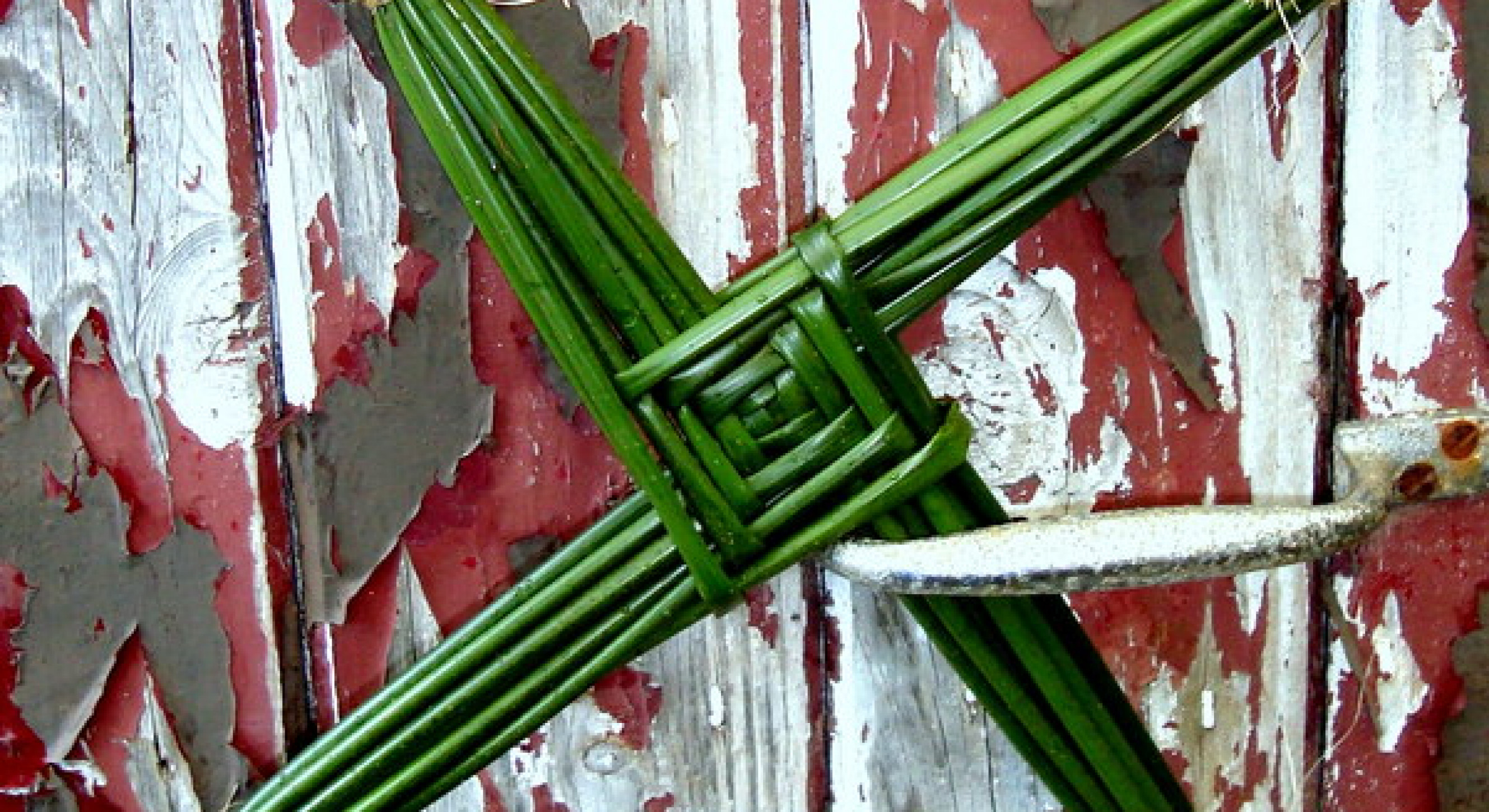St. Brigid is the female Patron Saint of Ireland, although outside of Ireland she is less well known than St Patrick and St Columcille. Saint Brigid’s Day is on 1 February and is celebrated in the Roman Catholic Church, the Eastern Orthodox Church and the Anglican Communion. Celebrating St Brigid’s Day has become a popular event in Ireland and in Irish communities abroad in recent times.
Brigid was an Irish princess who converted to Christianity and became the first Irish nun and abbess. She built a cell for herself under a large oak tree, which may have been the site of pagan ceremonies in earlier times. Her hermitage there was known as Kill–Dara, or “the cell of the oak.” She established a convent there, around which the Irish city of Kildare eventually grew. (Learn Religions has a biography of Brigid of Kildare HERE)
Brigid died on 1 February 525 and this date is still celebrated as St. Brigid’s Day. She is buried in a tomb in the abbey she founded in Kildare. Her remains were later moved to Downpatrick. There, she was laid to rest with Ireland’s other patron saints, St. Patrick and St. Columcille.
First day of spring
Brigid was considered the protector of agriculture, specifically farm animals as well as a patron of motherhood and birth. St Brigid’s Day on 1 February was generally seen as the first day of spring and celebrated the ancient festival of Imbolc meaning “in the belly”.
This referred to the pregnancy of ewes and the upcoming lambing season. The festival celebrated rebirth and renewal, while the sun gained strength and people looked forward to warmer days. Hearth fires and candles were lit to mark the day.
St Brigid is also known as Mary of the Gael, Muire na nGael or Our Lady of the Irish. During her life, she was reported to have performed many miracles. One legend surrounding St. Brigid is the tale of how she came to acquire the land to establish her convent in Kildare.
The story goes that the local chieftain would only give her the land which was covered by her cloak. She spread her cloak on the ground, and as the horrified chieftain looked on, the cloak miraculously began to spread and spread. He begged her to make it stop for fear of losing all his lands. She did so and this became her land for her convent. Another story goes that the ground was levelled by her spreading cloak to give us the Kildare flatlands known as the Curragh.
St Brigid’s Crosses
Perhaps the best known St Brigid’s tradition is the making and giving of St Brigid’s Crosses (Cros Bríde). The origins of the cross and its symbolism are believed to be pre–Christian. The story of how St Brigid came to make the first cross tells of a pagan chieftain on his death bed and the saint was sent for to teach him about Christ. His illness had made him delirious so Brigid gathered some rushes from the floor and began to fashion them into a cross. As she explained its meaning, his delirium calmed and he converted to Christianity before his death.
There are many holy wells in Ireland dedicated to St Brigid, most notably in Kildare. Again, the origins of making these pilgrimages to these wells to request healing and fertility date back to pagan times. These pilgrimages continue to this day.
These are relatively simple to make, and traditionally are made on St Brigid’s Eve, January 31st. They are usually made from fresh rushes, but straw can be used. Placing a St Brigid’s cross above the door is a welcome to visitors as well as protecting the home and its inhabitants.
